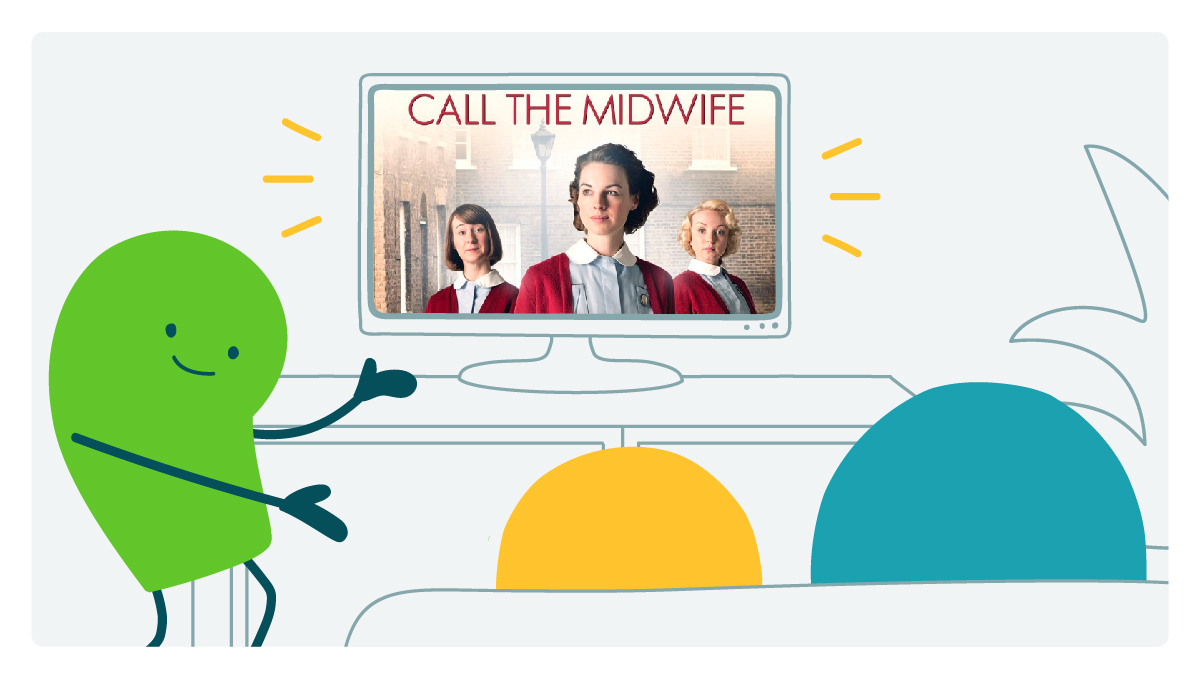
We probably don’t have to tell you, dear readers, that there have been some very chilly days as of late. With much of the country walloped by Arctic air and wintry precipitation, we’ve been spending lots of time engaged in one of America’s favorite pastimes: watching television.
So this week we’re suggesting that you check out Call the Midwife (currently on Netflix), the perfect January binge for public health professionals. The show isn’t new — quite the reverse, actually: It’s already been going for an impressive 13 seasons, and it shows no sign of slowing down yet. It fact, BBC has renewed it for at least 2 more seasons.
And we’re glad to hear it because we ❤️ Call the Midwife! This heartwarming British drama follows a group of nurse midwives working in the underserved Poplar district of London’s East End in the 1950s and 60s. The show was originally based on the very real memoirs of Jennifer Worth, a nurse midwife who trained in Poplar, arriving to home births on her trusty bicycle.
And while the primary duty of the nurse midwives was to provide obstetric care, their work extended far beyond babies. We also see them running community-based health clinics where they counsel patients and distribute health information (hello, health literacy). And they pay close attention to health-adjacent goings-on in the community. In fact, Call the Midwife could be a PSA for community-based public health/health care approaches. The nurse midwives get to know the families they serve in their own homes, in their own neighborhoods. They earn the trust of people in Poplar — they are witnesses to their patients’ needs, challenges, and relationships. They watch, they learn, and they approach their work with humility and respect for the people they serve.
You could also say Call the Midwife is something of a love letter to vaccines. We see the devastating effects of outbreaks of vaccine-preventable diseases, standard fare in communities like Poplar at the time. We see the nurse midwives promote the benefits of new vaccines as they hold vaccine clinics in the community (trusted messengers, anyone?). And we see the impact of vaccines unfold. The show highlights the importance of other forms of preventive care, too — like cervical cancer screening. Actually, it touches on pretty much everything you can think of in the health space, including some things you don’t often see in hit television shows — like female genital mutilation and incest.
And on a final note, the nurse midwives live at an Anglican convent during their time serving the people of Poplar. We hope you’ll enjoy the dynamic as eager nurse midwives mix with a delightful group of nuns — some, midwives themselves — who don’t always condone the secular women’s life choices.
The bottom line: Call the Midwife is packed with public health goodness, critical health care lessons, and health literacy highlights.
Post about it on X: This week, @CommunicateHlth is bringing you the latest installment of the We ❤️ Health Literacy TV Club — all about Call the Midwife: https://bit.ly/42g7pQk #HealthLiteracy
Browse recent posts